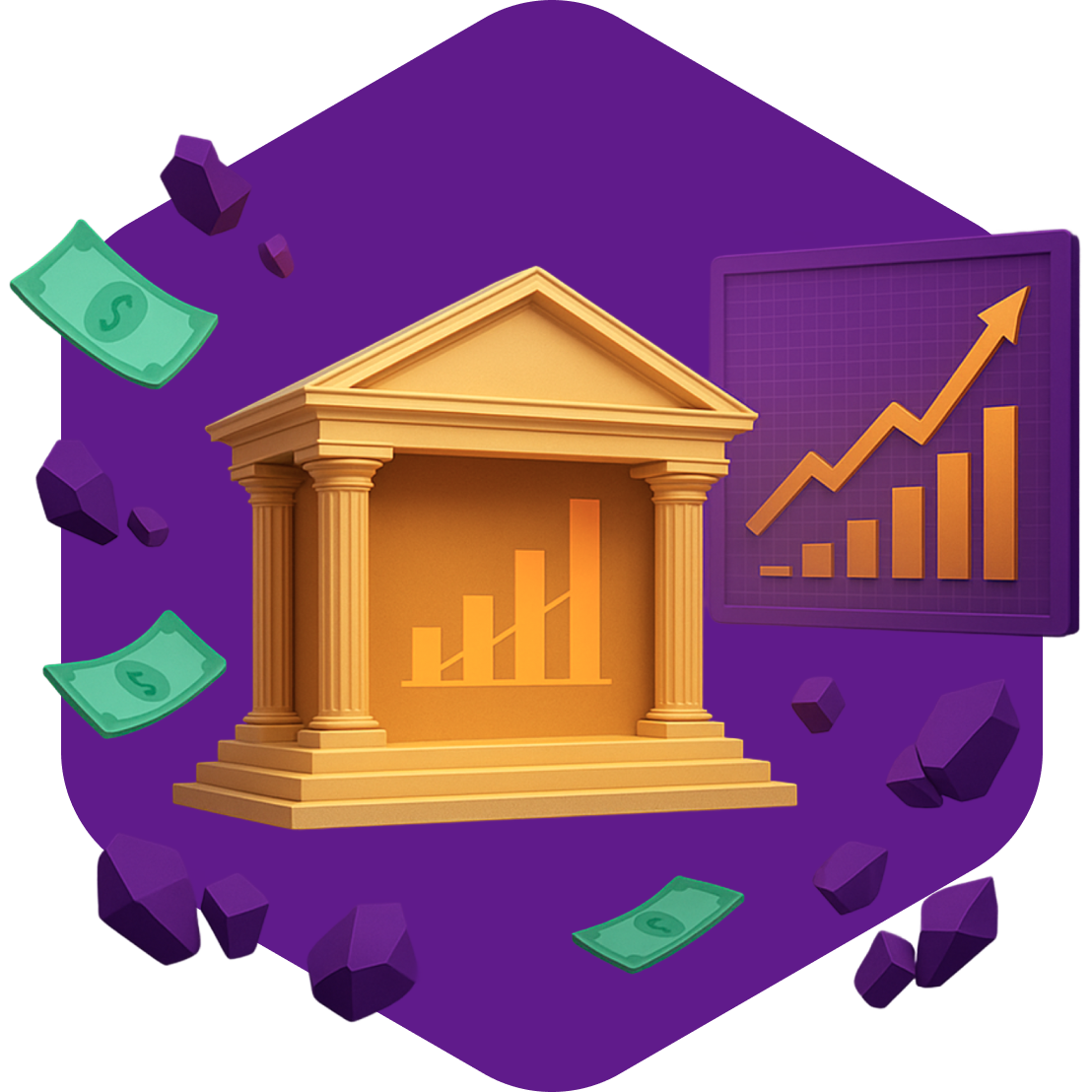Stock trading has been a crucial part of the global economy for centuries. Moreover, thanks to the internet and modern technologies, virtually anyone can now access financial markets, from almost anywhere. However, before you start trading with real capital, it is important to understand the basic terms and principles on which exchanges are built and operated. This article will therefore help you get acquainted with the fundamental concepts that every novice trader should know.
Interesting fact: Practically anyone aged 18+ can trade on the exchange, yet they must first orient themselves, grasp the principles, and have time for trading. Not everyone does, so we came up with XDIGR, where our registered users (miners) simply send deposits into prepared trades (we call them slots). We handle the rest of the trading!
What is an exchange and how does it basically work?
An exchange is an organized venue (today mostly an online venue) where supply and demand for various financial instruments meet. These include stocks, bonds, currencies, commodities, or various indices. The main task of an exchange is to ensure a transparent and fair environment in which prices are determined by the balance between buyers and sellers.
Historically, exchanges were physical locations, often large halls where traders shouted to place buy and sell orders. Today, most of these transactions happen electronically. Instead of the physical presence of traders, we now have systems connecting participants from around the world. This brings immense speed, accessibility, and efficiency.

Types of assets: Stocks, indices, forex, commodities, and more
On the exchange, we can trade a wide range of assets, each with its own characteristics. What does each one excel at?
- Stocks: Represent a share in a company, making you a co-owner of the firm and allowing you to profit from its value growth and dividends.
- Indices: Are aggregate indicators of the performance of selected stocks (e.g., S&P 500, DAX), trading which allows you to speculate on the performance of an entire market or its segment.
- Forex (currency market): The largest market in the world, where currencies are traded in pairs (e.g., EUR/USD), with profit or loss arising from exchange rate movements.
- Commodities: Include raw materials like oil, gold, silver, natural gas, or agricultural crops, where prices often depend on global supply and demand, weather, geopolitical events, and economic developments.
- Bonds: Are debt securities issued by governments or corporations, promising investors regular interest payments and principal repayment, generally considered a more conservative investment with lower risk.
- Cryptocurrencies: Are digital assets like Bitcoin or Ethereum, whose value is not centrally controlled and whose prices are highly volatile, influenced by trust, technology, and regulation.
The diversity of assets gives traders the opportunity to diversify their portfolios easily and efficiently and to seek opportunities across various markets, based on their knowledge and preferences. Fancy speculating on the rise of gold or the fall of the euro?
TIP: Every asset has its own specifics and opportunities, and traders on XDIGR leverage them. Through slots, you too can easily speculate on the rise or fall of various assets (exchange instruments) from the slots offer.
Liquidity, spread, pip, and lot: basic terms
In the trading world, you will encounter specific terms that help you better understand the market environment:
- Liquidity: Indicates how easily an asset can be bought or sold without significantly affecting its price.
- Spread: The difference between the ask (buy) and bid (sell) price of an asset.
- Pip: The smallest price movement in currency pairs, since they are quoted in small units.
- Lot: A standardized unit of volume when trading forex (1 lot = 100,000 units of the base currency); on other markets, you may hear “contracts” (e.g., futures) or trade in pieces (e.g., 1 share).
First steps to successful trading – what are they?
| Learning and education | Demo trading account | Start with small steps | Strategy and discipline |
| The better you understand the markets, the more qualified your trading decisions will logically be. | Such an account allows anyone to test strategies without risking real money. | The best approach is to start, so begin with smaller amounts and then gradually increase volume. | Always have a plan specifying when to enter and exit your trades. |
Understanding the basic principles of stock trading is the first step to success in financial markets. However, this article has only opened the door to the dynamic and adventurous world of investing and trading.
In Part 2 of our Beginner’s Guide to Stock Trading, you can look forward to the topic Trading Sessions and Timing. If you don’t want to wait or learn more, our platform is of course here, where you just choose a slot (a fully prepared trade) and make a deposit. Our traders will take care of everything else, as always.

